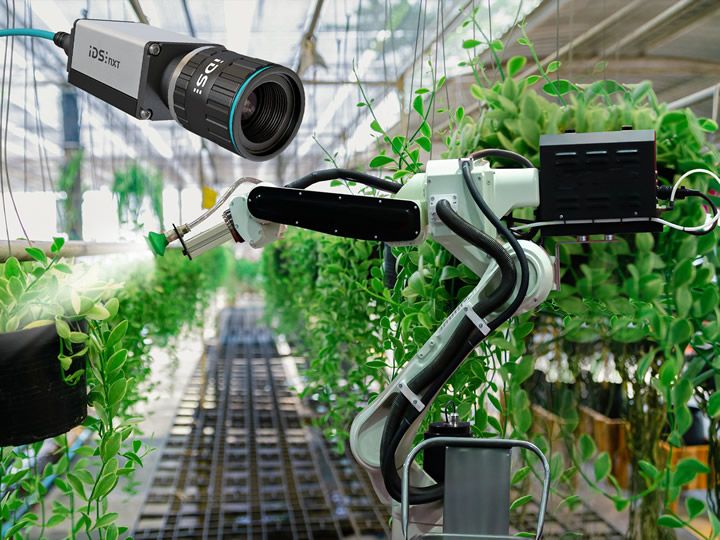Image processing with cameras and AI enables applications that were previously unthinkable. In agriculture, for example, it supports the optimal application of fertilizers, the visual monitoring of products and growth phases, and the processing of harvested crops.
 How to control growth phases intelligently and efficiently
How to control growth phases intelligently and efficiently

How to control growth phases intelligently and efficiently
Article from | IDS Imaging Development Systems
Image processing with cameras and artificial intelligence enables applications that were previously unthinkable. In agriculture, for example, it supports the optimal application of fertilizers, the visual monitoring of products and growth phases, and the processing of harvested crops. Intelligent systems for collecting and analyzing information are also a valuable tool when it comes to detecting conditions, making decisions and triggering follow-up processes.
Just a little while ago, it was hardly possible to gather such information based on camera technology. Now, all these new vision applications are made possible by artificial intelligence. AI itself is no easy technology – there are usually lots of steps required from gathering training images to a fully and independently working application. Users have to manage the data collection, the data set labeling, the AI knowledge, the programming of the neural network, the training, and validation and finally the hardware platform for the AI processing to run on. The all-in-one AI solution IDS NXT ocean (www.ids-nxt.com) takes care of everything between the user knowledge and physical deployment – this makes the technology available to anybody. With the help of the IDS NXT lighthouse cloud software, even users without prior knowledge of artificial intelligence or camera programming can train a neural network. They do not have to set up their own development environment, but can start training their own neural network right away. This involves three basic steps: To upload sample images, to label the images (e.g. “good” / “bad”) and then to start the fully automatic training. The trained network can then be executed directly on the IDS NXT industrial cameras, turning them into powerful inference cameras ready to solve the required task.
Another advantage of IDS NXT is the ability to perform AI-based image processing in an edge device. AI processing can be pretty intensive since neural networks can sometimes have millions of parameters, which means that processing and memory resources must be carefully managed. IDS has developed an FPGA AI accelerator core and worked hard to optimize the neural networks created with IDS NXT lighthouse to ensure that AI processing runs efficiently on IDS NXT cameras. There is no need to execute the AI on an industrial PC, since it is already integrated in the cameras. This paves the way for image processing tasks such as the classification of fruit varieties or the detection of unusual characteristics, shapes or colors, which can be directly solved by the camera.
To learn more about what applications are available today, please visit https://en.ids-imaging.com/smart-farming.html
The content & opinions in this article are the author’s and do not necessarily represent the views of AgriTechTomorrow
Comments (0)
This post does not have any comments. Be the first to leave a comment below.
Featured Product

The smartest dynamic LED grow light solution.
We set the standard in LED grow lights. No other grow light solution rivals Sollum's performance, thanks to innovation such as unmatched automatic dimming of light intensity and spectral in real time. Whether you grow specialty or mass market produce and all options in between, we have a cost-effective, environmentally friendly and fully supported LED grow light solution to fulfill your business needs.

